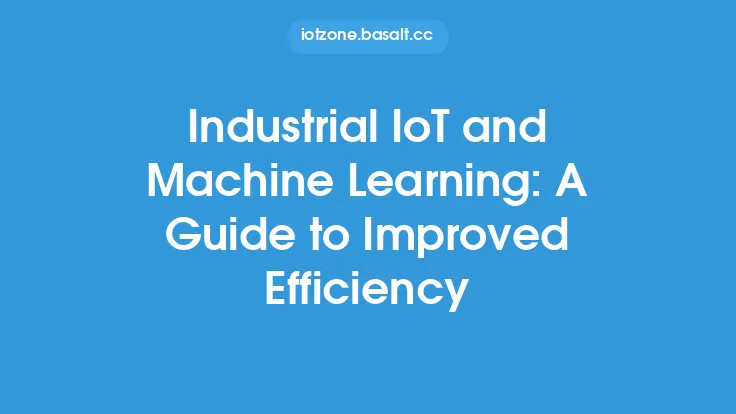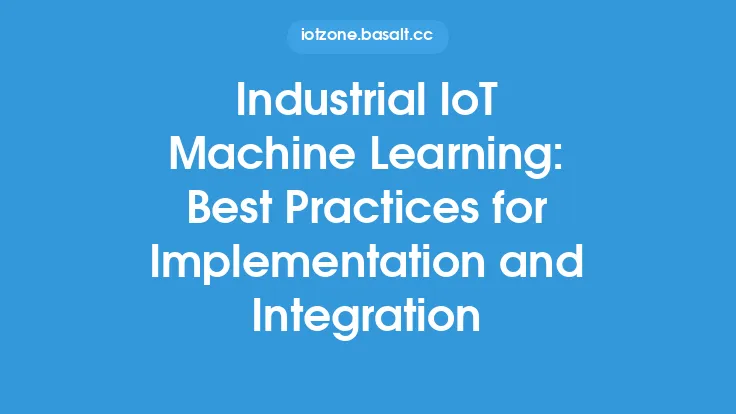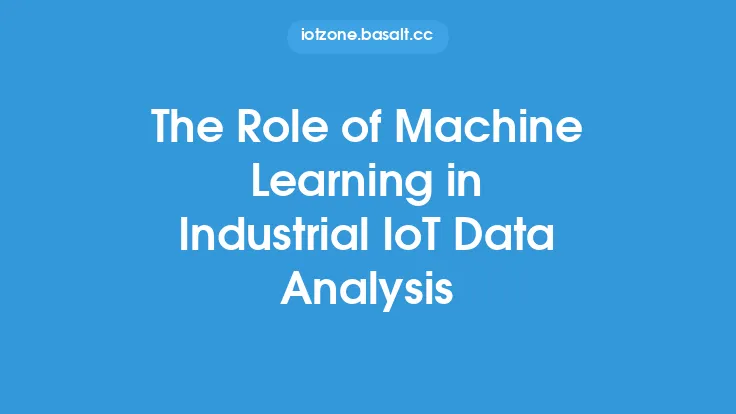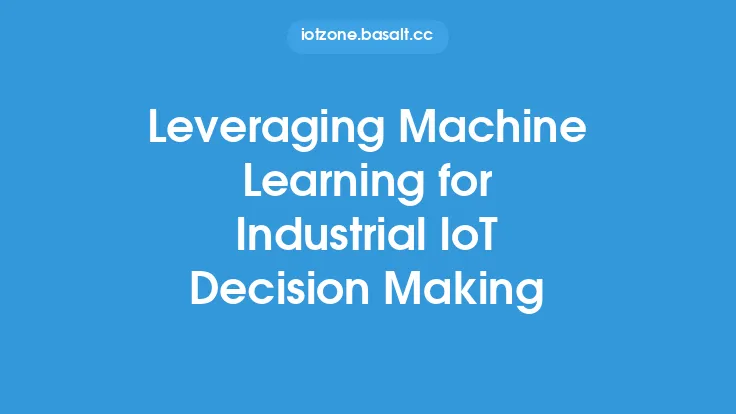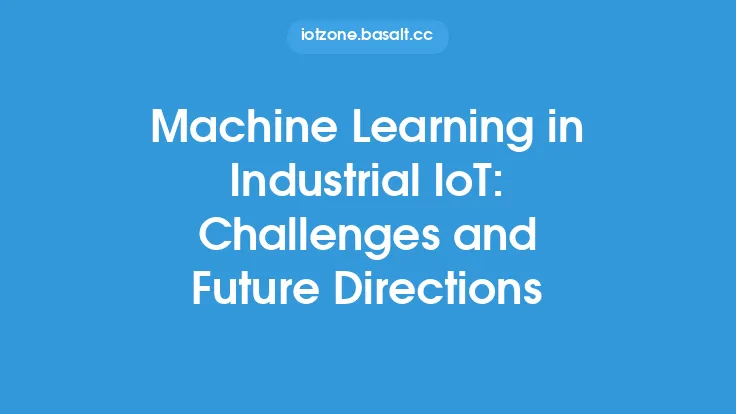The increasing use of Industrial Internet of Things (IIoT) technologies has led to a significant rise in the amount of data being generated by industrial devices and systems. This data can be used to improve operational efficiency, reduce costs, and enhance decision-making. However, the sheer volume and complexity of this data make it challenging to analyze and extract valuable insights. This is where machine learning (ML) comes into play, as it provides a powerful tool for analyzing and interpreting IIoT data.
Introduction to Machine Learning in IIoT
Machine learning is a subset of artificial intelligence (AI) that involves training algorithms to learn from data and make predictions or decisions without being explicitly programmed. In the context of IIoT, ML can be used to analyze data from sensors, devices, and other sources to identify patterns, detect anomalies, and predict future outcomes. This enables industrial organizations to optimize their operations, improve product quality, and reduce downtime.
Key Benefits of Machine Learning in IIoT
The integration of ML in IIoT operations offers several benefits, including improved predictive maintenance, enhanced quality control, and optimized supply chain management. By analyzing data from sensors and devices, ML algorithms can predict when equipment is likely to fail, allowing for proactive maintenance and reducing downtime. Additionally, ML can be used to analyze data from production lines to detect defects and anomalies, enabling real-time quality control and improving product quality.
Machine Learning Techniques for IIoT
Several ML techniques are relevant to IIoT operations, including supervised learning, unsupervised learning, and reinforcement learning. Supervised learning involves training algorithms on labeled data to make predictions or classify new data. Unsupervised learning involves training algorithms on unlabeled data to identify patterns and relationships. Reinforcement learning involves training algorithms to make decisions based on rewards or penalties. In IIoT, these techniques can be applied to a range of applications, including predictive maintenance, quality control, and supply chain optimization.
Applications of Machine Learning in IIoT
ML has a wide range of applications in IIoT, including condition-based maintenance, energy management, and inventory management. Condition-based maintenance involves using ML to analyze data from sensors and devices to predict when equipment is likely to fail. Energy management involves using ML to optimize energy consumption and reduce waste. Inventory management involves using ML to predict demand and optimize inventory levels.
Technical Requirements for Machine Learning in IIoT
The implementation of ML in IIoT requires several technical components, including data ingestion, data processing, and model deployment. Data ingestion involves collecting and processing data from IIoT devices and sensors. Data processing involves cleaning, transforming, and analyzing the data to extract valuable insights. Model deployment involves deploying trained ML models to production environments where they can be used to make predictions or decisions.
Data Preprocessing for Machine Learning in IIoT
Data preprocessing is a critical step in ML, as it involves cleaning, transforming, and preparing the data for analysis. In IIoT, data preprocessing may involve handling missing values, removing outliers, and normalizing the data. Additionally, data preprocessing may involve feature engineering, which involves selecting and transforming the most relevant features to improve model performance.
Model Training and Deployment
Model training involves training ML algorithms on the preprocessed data to develop predictive models. Model deployment involves deploying the trained models to production environments where they can be used to make predictions or decisions. In IIoT, model deployment may involve integrating the models with existing systems and infrastructure, such as manufacturing execution systems (MES) or enterprise resource planning (ERP) systems.
Security and Privacy Considerations
The use of ML in IIoT also raises several security and privacy considerations, including data protection, model security, and access control. Data protection involves protecting the data used to train and deploy ML models from unauthorized access or theft. Model security involves protecting the ML models themselves from tampering or reverse engineering. Access control involves controlling who has access to the ML models and the data used to train them.
Future Directions for Machine Learning in IIoT
The future of ML in IIoT is exciting and rapidly evolving, with several emerging trends and technologies, including edge AI, 5G networks, and digital twins. Edge AI involves deploying ML models directly on IIoT devices, reducing latency and improving real-time decision-making. 5G networks involve using high-speed, low-latency networks to support the transmission of large amounts of IIoT data. Digital twins involve creating virtual replicas of physical systems to simulate and optimize their behavior.
Conclusion
In conclusion, machine learning is a powerful tool for enhancing Industrial IoT operations, offering several benefits, including improved predictive maintenance, enhanced quality control, and optimized supply chain management. By applying ML techniques to IIoT data, industrial organizations can optimize their operations, improve product quality, and reduce downtime. As the use of IIoT technologies continues to grow, the role of ML in IIoT operations is likely to become increasingly important, enabling industrial organizations to unlock new insights, improve efficiency, and drive innovation.
